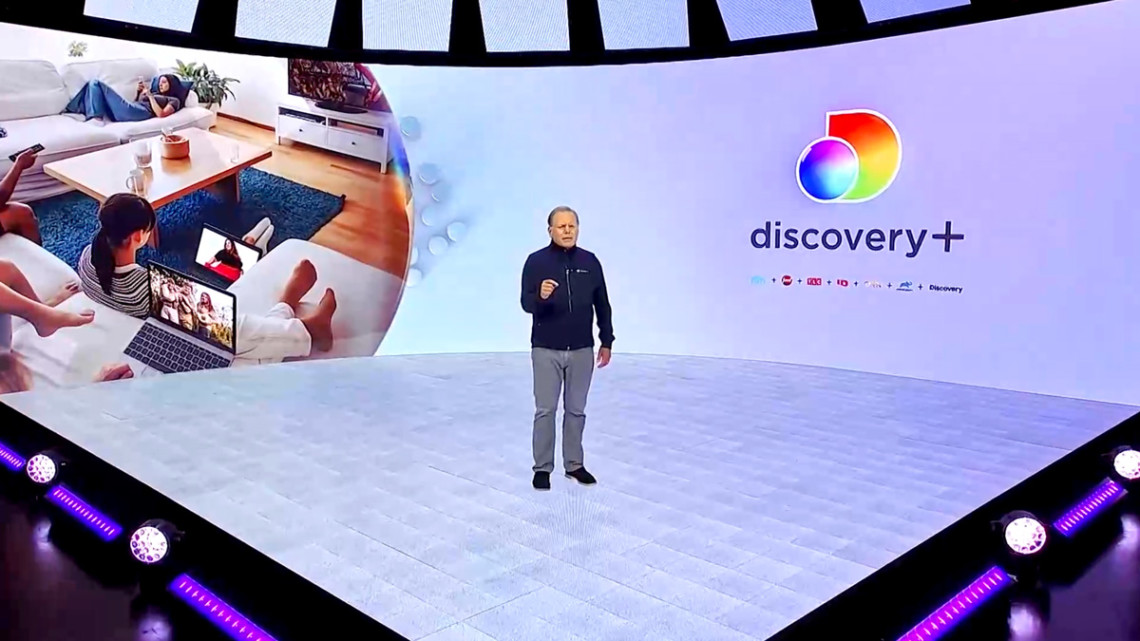David Zaslav: Discovery Gets More Revenue Per Sub With DTC Than With Cable
Digital platform provides parity pricing to broadcast

Discovery gets more revenue per subscriber from Discovery Plus than it does from being on cable and satellite, CEO David Zaslav said.
At MoffettNathanson's 8th Annual Media and Communications Summit Wednesday, Zaslav was asked if Discovery's pivot from pay-TV to direct-to-consumer streaming would be accretive. Many on Wall Street question if streaming will prove to be more profitable than the high margin cable network business.
Discovery reported last month that it had 15 million DTC subscribers, up from 11 million in February.
Zaslav answered from a revenue perspective. He said that Discovery has been undervalued by both distributors and advertisers as a cable property. While generating about 20% of cable viewing, Discovery’s networks get only about 7% to 8% of distribution revenue, leaving average revenue per subscriber at $3 to $3.50 per month.
Discovery makes another $3 to $3.50 per cable sub in the advertising market, where Discovery commands prices on a cost-per-thousand (CPM) viewer basis that are much lower than the broadcast networks, he said.
Zaslav said Discovery’s ad-free version of Discovery Plus generates ARPU of $7 a month and its cheaper “light ad” version does even better, with ARPU of more than $10, or 30% to 40% higher. He noted that advertising on Discovery Plus was in high demand because of the good demographics of its viewers, the fact that 50% of them aren’t cable subscribers and the nature of the streaming ad market, where Discovery gets parity pricing with OTT offerings from the broadcasters.
With cord-cutting, Discovery is bound to lose cable subscribers. But with Discovery Plus in place, “if we lost a million [cable] subs, all we have to do is pick up 650,000 [Discovery Plus] subs in order to be making more money,” he said. “That’s one of the reasons why we’re investing in Discovery Plus."
Broadcasting & Cable Newsletter
The smarter way to stay on top of broadcasting and cable industry. Sign up below
He said the economics are even more favorable in Europe, where pay-TV penetration is lower and distribution fees are much smaller.
Zaslav noted that rival media companies also jumping into streaming must clear a much higher bar, because they were getting higher fees from distributors and better pricing for advertising. Other media companies are also spending billions on scripted programming. While Zaslav said Discovery was spending more on programming for both Discovery Plus and its linear channels, Discovery’s unscripted shows are less expensive to produce.
In its first-quarter earnings report, Discovery said Discovery Plus contributed to a loss of about $400 million in what it calls next-generation operating income as the company spent on programming, technology and marketing to launch its streaming product and add subscribers.
Zaslav said Discovery was reducing its ad spending behind Discovery Plus, both on its own channels and on other channels. He said that awareness among Discovery cable subscribers was already high and that after trying many options, the company was getting a better feel for what works and what doesn’t.
“We’re going to be much more efficient,” he said.
Jon has been business editor of Broadcasting+Cable since 2010. He focuses on revenue-generating activities, including advertising and distribution, as well as executive intrigue and merger and acquisition activity. Just about any story is fair game, if a dollar sign can make its way into the article. Before B+C, Jon covered the industry for TVWeek, Cable World, Electronic Media, Advertising Age and The New York Post. A native New Yorker, Jon is hiding in plain sight in the suburbs of Chicago.

